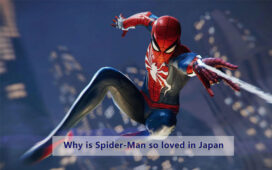- You have no items in your shopping cart
- Subtotal: $0.00
What is superhero cape?
Capes provide cover for these characters (and many others), whether they are bulletproof in some way or visual cover. Capes can protect our heroes from flying objects such as shrapnel, or break their falls. They can also help our heroes fly or glide on air (again, refer to Batman).The cape is drawn as cloth fluttering around a character to signify that the super hero is a vibrant, spinning dynamo of action and movement.
Why Superhero Wear Cape
If you are a superhero (whether main hero, Sidekick, or even just part of a heroic army), odds are you wear a superhero cape.
Okay, not really that likely anymore, especially since the Silver Age, but capes are a typical thing for superheroes.
The reason for the cape goes back to the first Comic Book Super Heroes. Most prominently, Superman’s outfit specifically mimics that of early 20th-century circus strongmen, who often wore a similar cape/singlet design as a costume. Their simple bold colors were also conveniently easy to reproduce in early print comics.
-
Product on sale
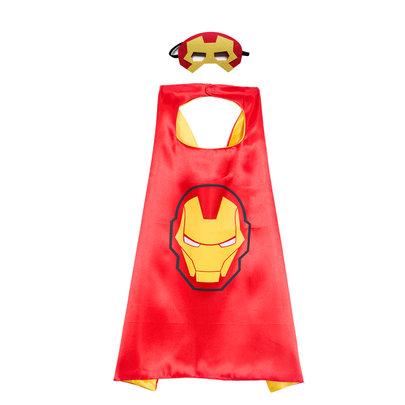 Iron Man Cape And Mask Set Superhero CostumeOriginal price was: $20.00.$15.00Current price is: $15.00.
Iron Man Cape And Mask Set Superhero CostumeOriginal price was: $20.00.$15.00Current price is: $15.00. -
Product on sale
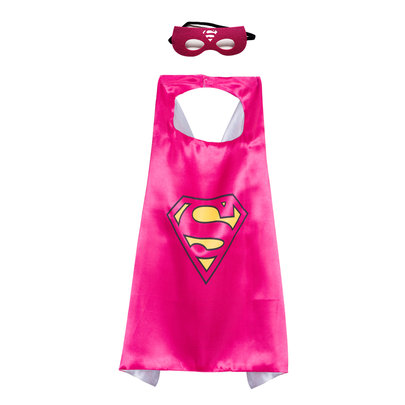 Superman Cape & Mask Set Kids Superhero Dress UpOriginal price was: $20.00.$15.00Current price is: $15.00.
Superman Cape & Mask Set Kids Superhero Dress UpOriginal price was: $20.00.$15.00Current price is: $15.00. -
Product on sale
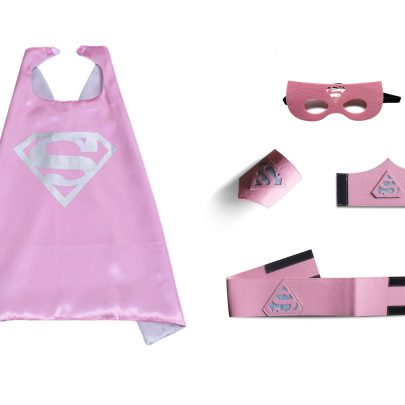 Pink Superman Cape And Mask SetsOriginal price was: $20.00.$16.00Current price is: $16.00.
Pink Superman Cape And Mask SetsOriginal price was: $20.00.$16.00Current price is: $16.00.
Capes have long been a feature of comics and animation, as these media both work through visuals while allowing the creators to control the character’s environment. Thus, any capes used can always be made to look cool. They were a particular feature of the golden age of superheroes.
In the modern era (late 20th to 21st century) there’s been a trend against them, due to becoming something of a Dead Horse Trope and because of some awareness of the practical downsides. Most Marvel heroes are capeless, for example. The ones that do wear them tend to have some combination of otherworldliness, moral ambiguity and a less physical method of attack than others.
On the other hand, capes have remained very popular with villains, especially the most important ones. This relates to Evil Is Cool.
By and large, if any character wears a cape, and it’s not a historical or pseudo-historical setting, it should be taken as read that he is either very powerful/important (and probably a villain), or a vainglorious dolt with an inflated opinion of himself. Bonus points if you’ve got a huge collar and shoulderpads as well. Some rare ones would even be a Pimped-Out Cape.
Who Was The First Superhero To Wear A Cape?
Superman was the first superhero, and the first cape. His look is based on a circus performer, strongman or acrobat that wear tights to show off their muscles and shorts over the tights to keep their privates private.
Who was the first superhero to wear a cape in comics?
Some people said it’s Mandrake the Magician,with his first appearance on June 11, 1934.
Some other people said it’s The Shadow
The Shadow, who began in 1930 as a narrator of a series of radio dramas, but gained a distinct identity in pulp magazines from 1931. The Shadow laid the foundations for the archetype of the superhero, including stylized imagery and title, sidekicks, supervillains, and a secret identity. Clad in black, The Shadow operated mainly after dark as a vigilante in the name of justice, and terrifying criminals into vulnerability. He has the power to cloud people’s minds; a sort of hypnotism using his red-stoned ring. Several comics adaptations have been made, beginning in 1940, most notably several DC Comics series. He is portrayed as having a black cape with a red reverse.
And some said it’s superman: Because Mandrake has no powers, save for being a good hypnotist and stage magician. Flash Gordon was just a guy who flew to another planet.
And yeah, we could list any number of pulp heroes, literary characters, figures from legend, all having been adapted to comics at one point or another.
Superman was the first “superhero”, as in he had “powers and abilities far beyond those of mortal men”, and he wore a cape. So if you don’t want to do any hairsplitting, it’s Superman.
If you open the definition up a bit, it’s not so simple.
What superhero has a cape?
Of those heroes, five are wearing capes – Superman, Red Tornado, Batman, Martian Manhunter, and Zatanna. Of them, Batman, Red Tornado, and Martian Manhunter have always worn capes to my knowledge, and we’ve already determined that Superman wears one most of the time, so that’s four for sure.
What superhero wears a green cape?
Captain Citrus was born in 2011 as a big, fat talking orange wearing a green cape. Now he’s being transformed into a buff Marvel Comics superhero who will fight evil alongside the likes of Captain America.
What superhero has a blue cape?
Batgirl’s cape changes depending on which era she’s in. When she was first introduced, the cape was a cool combination of blue and black. Although it isn’t her best, the cape was modeled after her male counterpart, Batman. From there, the cape changed to:
- Blue and yellow
- Black and yellow
- Purple and black
And her best, purple and yellow.
Batgirl’s cape is as synonymous with the character as her intelligence, quirky disposition, and do what’s right attitude.
Batgirl makes this list of superheroes that wear capes simply because there isn’t another female character more deserving of it. Alongside Dick Grayson, she is the second most important member of the Batfamily. The first, if you’re wondering, is Batman.
What superhero wears a purple cape?
Hawkeye may be the most well-known purple superhero in the world
What superhero wears a red cape?
Superman is known for his big red cape (usually complete with that iconic S).
If you want to dir superhero capes by yourself,Please Read: How to make superhero cape and mask?
If you go to superhero theme party,Please read : Where to buy superhero cape and mask?
Why Do Most Superheroes Wear Capes?
While fewer and fewer comic book characters are wearing capes these days, they are still associated with many popular heroes like Superman, Batman, Thor, Vision, Magneto and more.
-
Product on sale
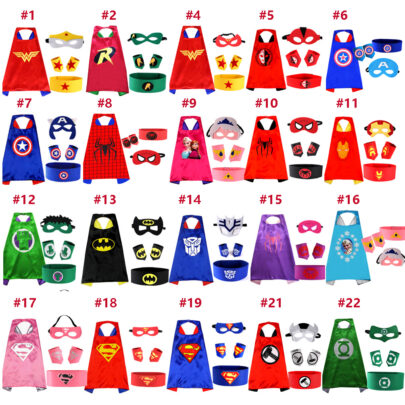 Coolest Marvel Superhero Cape And Mask Set For Kids$26.00 – $80.00
Coolest Marvel Superhero Cape And Mask Set For Kids$26.00 – $80.00 -
Product on sale
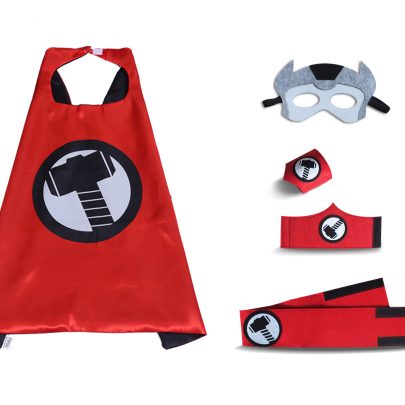 Thor Cape And Mask Sets For Children’sOriginal price was: $20.00.$16.00Current price is: $16.00.
Thor Cape And Mask Sets For Children’sOriginal price was: $20.00.$16.00Current price is: $16.00. -
Product on sale
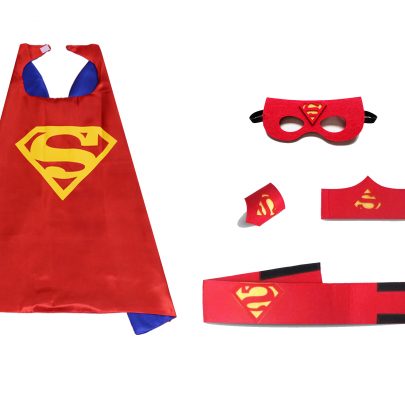 Kids Red Superman CapeOriginal price was: $20.00.$16.00Current price is: $16.00.
Kids Red Superman CapeOriginal price was: $20.00.$16.00Current price is: $16.00. -
Product on sale
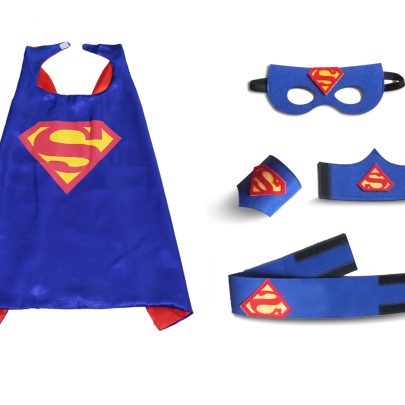 Kids Superman Cape And Mask Sets BlueOriginal price was: $20.00.$16.00Current price is: $16.00.
Kids Superman Cape And Mask Sets BlueOriginal price was: $20.00.$16.00Current price is: $16.00. -
 Kids Superheros Batman Cape And Felt Mask Sets With Wristbands Waistband$16.00
Kids Superheros Batman Cape And Felt Mask Sets With Wristbands Waistband$16.00
Some of them wear capes simply because they serve a practical purpose. Like Batman or Moon Knight, who use their capes to glide across cities, shield them from harm and disorient their enemies.
Artistically they can serve the purpose of making characters look bigger and more menacing. In addition, they have also been brought up as an easy way for artists to show motion in a panel. They can show the physics of a scene as well as which direction and how fast a character is moving:
But how did this tradition of putting capes on superheroes start in the first place?
Well, this is something that’s been debated a lot with many possible explanations and theories. But, let me give you a few main ideas.
It’s no secret that superman’s creators Joe Shuster and Jerry Siegel were inspired by circus performers when they designed the man of steel. We’ve already discussed this when we talked about Why Most Superheroes Wear Their Underwear On The Outside. But according to one theory, there’s a theme here as this is yet another design element inspired by circus: Superman’s cape was designed after the capes wore by strongmen, acrobats and ring leaders:
However, they wouldn’t normally keep their capes on when performing their feats of strength or acrobatics. It was typically something they took off beforehand but Superman, being Superman, keeps his on at all times.
Capes also expressed in Superman a sense of majesty and a touch of mystery which helped to showcase the idea that he was otherworldly. The bright red flowing cape was something that was very new to comic heroes and it helped Superman stand out amongst characters like Flash Gordon and the Phantom and they also symbolize outsider status.
Other characters, like Batman, were said to be inspired by swashbuckling films like The Mark of Zorro (which was published in 1920) – a masked outlaw who sported a long black traditional Spanish cape:
To be clear, all of this is not to say that Batman and Superman were the first heroes ever to have capes and everyone else is just copying them. There were pulp heroes before them like The Shadow who wore capes, but Superman and Batman were massive successes when they debuted.
So it wouldn’t be too much of a stretch to say that the two of them helped to standardize the choice for superheroes. At least in the golden age of comics.
Exploring The Cape Theory: Do Super Heroes Really Need Capes?
“There Is Always A Purpose For A Cape”
Should super heroes always wear capes? I think it depends on one thing: purpose. The cape definitely highlights a sort of dynamism. When you open up a comic book, the pages do not move, so the cape is drawn as cloth fluttering around a character to signify that the super hero is a vibrant, spinning dynamo of action and movement.
You have your vigilante types like Batman and Blade who have utility uses for their capes (well, Blade wears a trench coat, but the way he swings the coat around you would think otherwise).
For them, their capes are indispensable tools. The coat/cape has many hidden pockets to store all kinds of items, devices, and weapons that have various need.
CAPE AS A UTILITY
Take The Shadow, for example…
His cape is a huge staple within the comic. He would swirl his cloak around him to distract and confuse his enemies. Additionally, The Shadow (and Batman to an extent) uses his cape to create a shroud of darkness around him, so he blends into his surroundings. Capes provide cover for these characters (and many others), whether they are bulletproof in some way or visual cover. Capes can protect our heroes from flying objects such as shrapnel, or break their falls. They can also help our heroes fly or glide on air (again, refer to Batman).
There are plenty of instances where a costume/uniform works solely without a cape. Look at Captain Marvel and Captain America for example. What they wear seems to be based on military-style uniforms and work as utilities in and of themselves. I believe if a costume/uniform does not have a cape, what is being worn should have a purpose.
Cape as Fashion/Symbolism
Superman is a good example of this. In his case, the cape creates an ‘epic factor.’ Superman’s frequently depicted as a sort of guardian angel, but giving him wings would have been too much. Why not give him a cape instead? I’m sure there is a lot more Kryptonian history involved in the wearing of the cape, but that’s another can of worms for another day …..
Fashion has a lot to do with it as well. Depending on the costume design, a cape is necessary to enhance the look. Would this costume be convincing if it came without a cape? I think not.
-
Product on sale
 Kids Red Superman CapeOriginal price was: $20.00.$16.00Current price is: $16.00.
Kids Red Superman CapeOriginal price was: $20.00.$16.00Current price is: $16.00. -
Product on sale
 Pink Superman Cape And Mask SetsOriginal price was: $20.00.$16.00Current price is: $16.00.
Pink Superman Cape And Mask SetsOriginal price was: $20.00.$16.00Current price is: $16.00. -
Product on sale
 Kids Superman Cape And Mask Sets BlueOriginal price was: $20.00.$16.00Current price is: $16.00.
Kids Superman Cape And Mask Sets BlueOriginal price was: $20.00.$16.00Current price is: $16.00.
Superman doesn’t use his cape to manipulate his enemy, or shield him from much of anything. It is just there. To me, his long, flowing (probably heavy) red cape always looks cumbersome to wear. If you need reference as to why capes don’t always work, look at this scene from The Incredibles:
Personally, I like some super hero looks without a cape. Take Batman Beyond. His costume looks sleeker, and he looks lighter on his feet.
Still blends into the dark, without the cape.
-
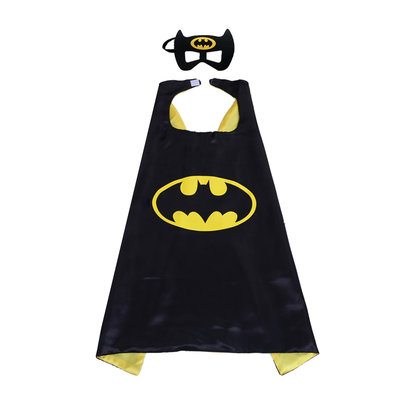 Superhero Batman Capes And Mask Set For Children$20.00
Superhero Batman Capes And Mask Set For Children$20.00 -
Product on sale
 Batman Cape Mask Sets for Kids Childrens Superhero CostumeOriginal price was: $20.00.$16.00Current price is: $16.00.
Batman Cape Mask Sets for Kids Childrens Superhero CostumeOriginal price was: $20.00.$16.00Current price is: $16.00.
I think in the end it boils down to costume design (not including characters like Iron Man, of course, because a cape on that suit would not be appropriate). Some costumes look fit for a cape, and for others, I’m not sure why they wear a cape at all. I guess the bottom line is what purpose it serves and whether it makes sense in terms of the character. Maybe someone, someday will educate me a little more on the cape theory.
Not All Heroes Wear Capes
The phrase “Not all heroes wear capes” draws a comparison between a person in the real world and a superhero, with the point being that people in reality can be just as good as the idealized heroes of comics and movies. The phrase itself relies on the idea that most heroes, or at least most superheroes, do wear capes. But is that really true? Do most superheroes wear capes? Or is the phrase “Not all heroes wear capes” based on a fallacy? Let’s examine the evidence.
What is a cape?
Before we go any further, it’s important that we’re all on the same page about what constitutes a cape. The dictionary defines cape as “a sleeveless outer garment or part of a garment that fits closely at the neck and hangs loosely over the shoulders.” Let’s break that down. In order for something to qualify as a cape, it must:
- Have no sleeves
- Be worn on the outside of other clothes
- Be either a separate piece of clothing, or a part of a piece of clothing
- Fit closely at the neck’
- Hang over the shoulders
- Hang loosely
Using that definition, let’s look at an example superhero and determine whether they’re wearing a cape or not.
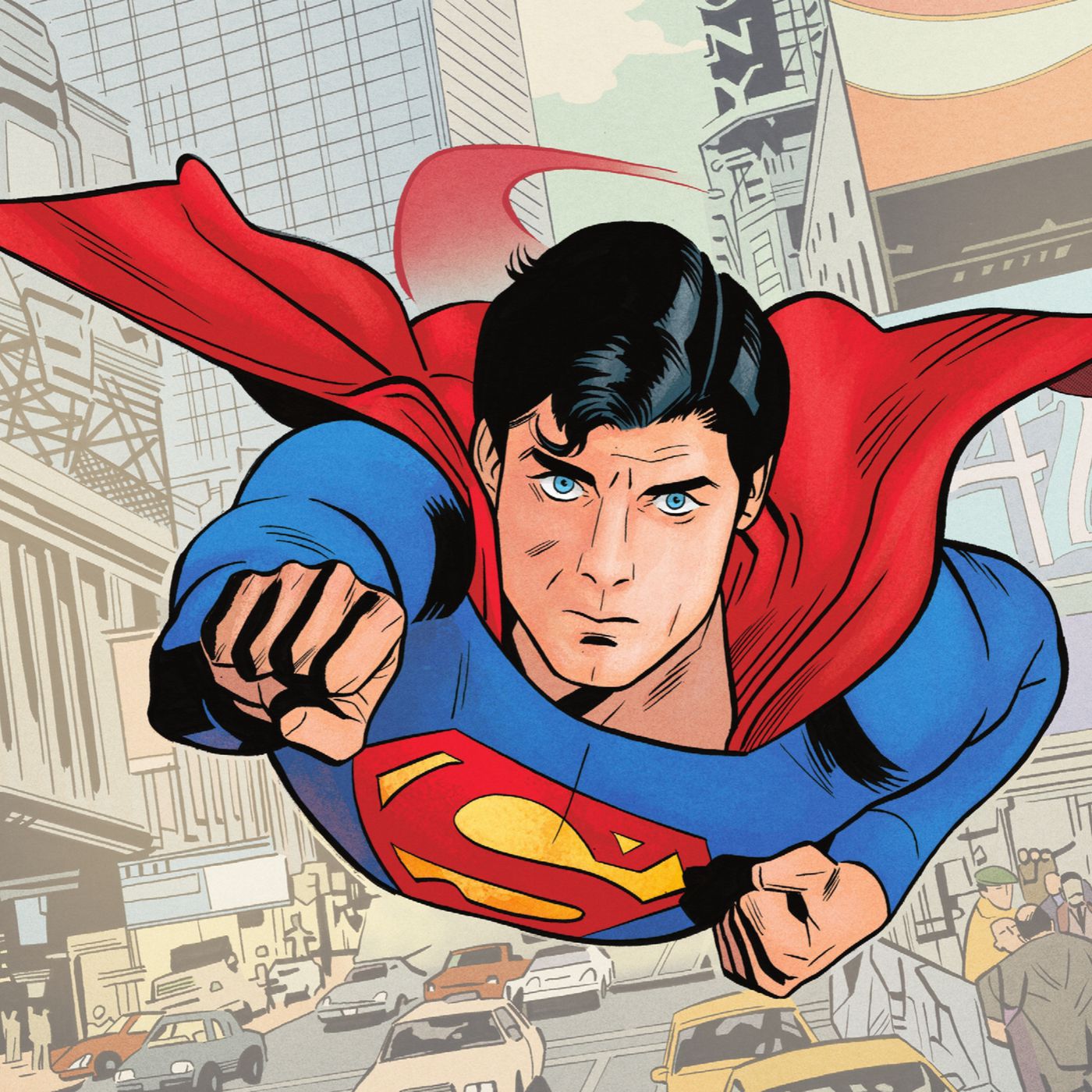
This is Superman. You may have heard of him. Whoever came up with the phrase “Not all heroes wear capes” was probably thinking of Kal-El of Krypton when they did so.
“But Joe,” you might be shouting at your screen, “It’s Superman. Of course he wears a cape. It’s right there.” If you had asked me before I looked up the dictionary definition of a cape, I would have immediately agreed with you. But the definition specifically says a cape “fits closely at the neck.” Further digging into this phrase indicates the fit is similar to something like a turtleneck, though not necessarily with the height implied by a turtleneck. Now look at Superman’s cape. It attaches at the collar of his shirt, but it doesn’t necessarily fit ‘closely’ to the neck, does it? I would call it neck-adjacent, just touching the base of the neck as it connects to the shirt and sits mostly on the shoulders.
Friends, I’m not going to sit here and tell you Superman doesn’t wear a cape. We all know Superman wears a cape. Except when he doesn’t.
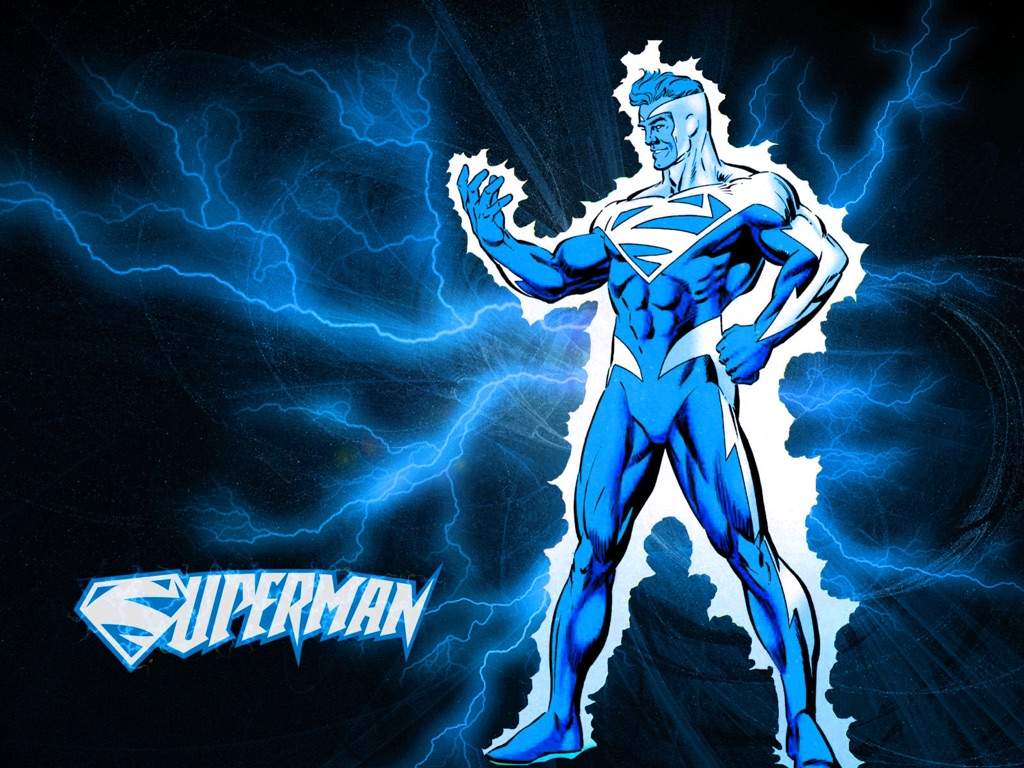
All I’m saying is that, for the purposes of this analysis, we’re not strictly going to be following the dictionary definition of a cape. We’ll follow the Superman definition of a cape (especially since, as I mentioned before, whoever came up with the phrase “Not all heroes wear capes” was probably thinking of Superman when they did so). The Superman definition of a cape, then, is essentially the same as the dictionary definition, but without being strict about the cape fitting “closely to the neck.”It’s still sleeveless, it stills hangs over the shoulders, it’s still worn on the outside of other clothing, and it’s still either a separate piece of clothing or a connected part of another piece of clothing.
What Constitutes a Caped Hero?
So. Regarding Superman Blue up there. There are some superheroes who have gone through multiple costumes that do or do not include a cape. Storm, for example, has had multiple looks, caped or capeless:
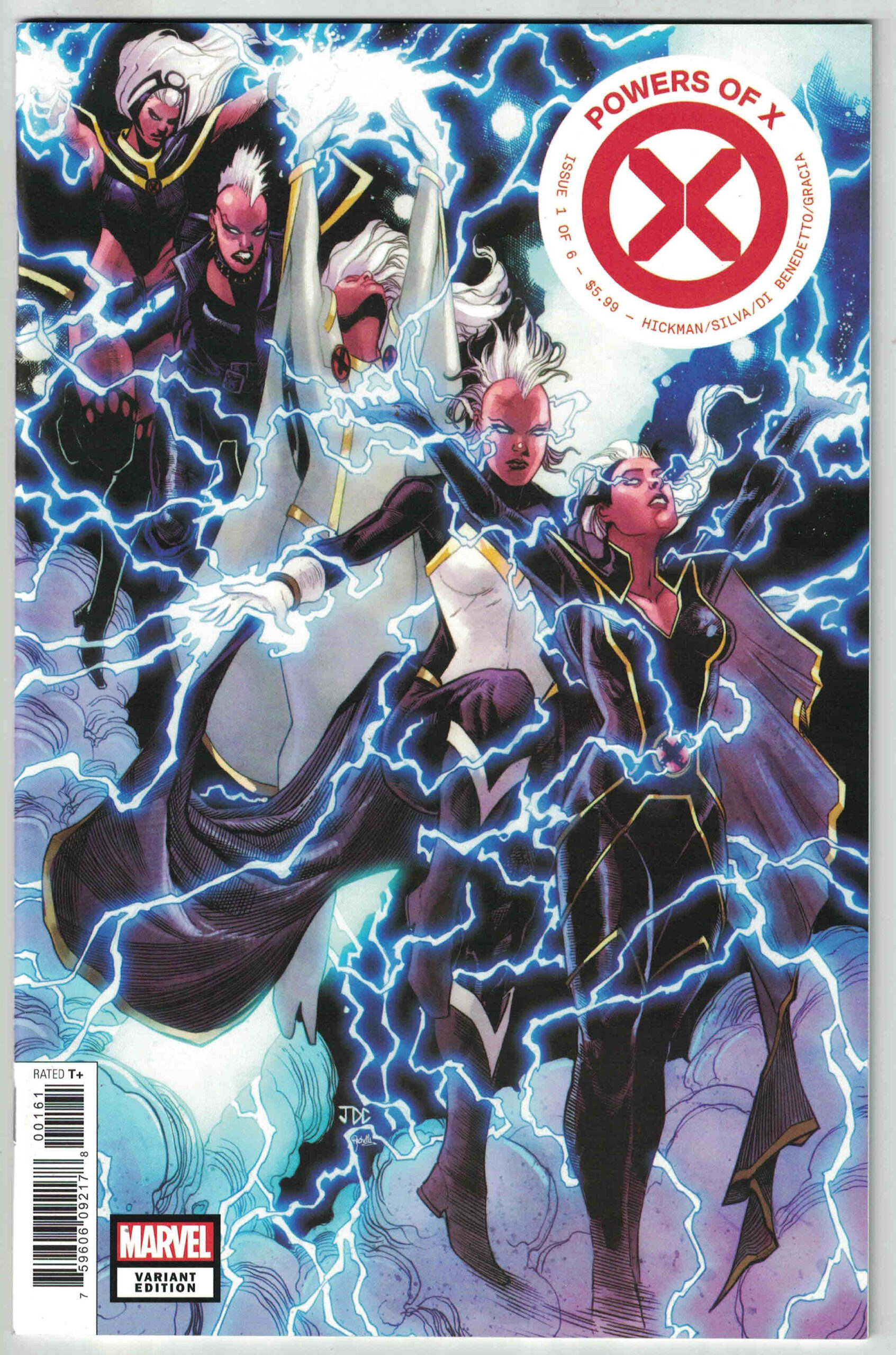
Other heroes, like Wonder Woman, are known to wear capes for special occasions:
For the purposes of this analysis, I’m going to consider the overall timeline of a character and whether they’ve worn a cape or not. If they’ve done both, I’ll look at what they’ve worn for the majority of their history. So, for example, Storm has worn a cape for most of her history, so I would consider her to be a character who wears a cape. Rogue has only sporadically worn a cape, with a majority of her looks not including one, so I would consider her to be a character who does not wear a cape. Electric powers aside, Superman usually wears a cape, while Wonder Woman only pulls hers out as formalwear.
Population Sampling
Now that we’re all on the same page about what we’re going to be looking at, we need to determine sample size. Between publishers like DC and Marvel, there are hundreds, if not thousands, of superheroes, caped and otherwise. Expanding the scope to other publishers add hundreds more. There are simply too many heroes to look. For the purposes of a representative sample, then, I’m going to limit analysis to DC and Marvel heroes, looking at members of a few different superhero teams. The website superherodb.com lists 1,547 male and female superheroes in its database. Statistically, 10% of a population is a considered to be the ideal sample size, so we’re going to look at around 150 superheroes.
Conclusion
| Team/Group | Total # of Heroes | Caped Heroes | Non-Caped Heroes |
| Justice League of America | 15 | 4 | 11 |
| Justice Society of America | 32 | 11 | 21 |
| Teen Titans | 52 | 15 | 37 |
| Fantastic Four | 4 | 0 | 4 |
| The Avengers | 40 | 9 | 31 |
| The X-Men | 31 | 3 | 28 |
| Grand Total | 174 | 42 | 132 |
We ended up with 174 heroes total in our sample, or 11.25% of the total population. Of those 174 heroes, 42 total (24.14%) are caped heroes, while 132 (75.86%) have not worn capes for the majority of their history. That’s a fairly definitive majority of heroes who do not wear capes.
So what have we learned from all of this? Well, for one thing, we’ve learned that it’s possible to expend a lot of time and energy analyzing something that never required the level of analysis being applied. But more importantly, we’ve learned that, while “Not all heroes wear capes” is technically accurate, it would be more accurate to say “Most heroes do not wear capes.”
Exhibit A: The Justice League of America
Here we have a classic José Luis García-López image of the bronze age iteration of the Justice League. Fifteen heroes appear in this image. Of those heroes, five are wearing capes – Superman, Red Tornado, Batman, Martian Manhunter, and Zatanna. Of them, Batman, Red Tornado, and Martian Manhunter have always worn capes to my knowledge, and we’ve already determined that Superman wears one most of the time, so that’s four for sure.
The wildcard is Zatanna. Yes, she’s wearing a cape in that image, and she’s been known to wear a cape at other times as well – when she first joined the Justice League she wore a different costume featuring a red collared cape, and her New 52 Justice League Dark uniform featured a cape – but she’s far more commonly seen in her traditional magician uniform, and her current uniform features a long coat in place of a cape. So despite Zee’s cape in the image above, I’m going to count her as a non-caped character.
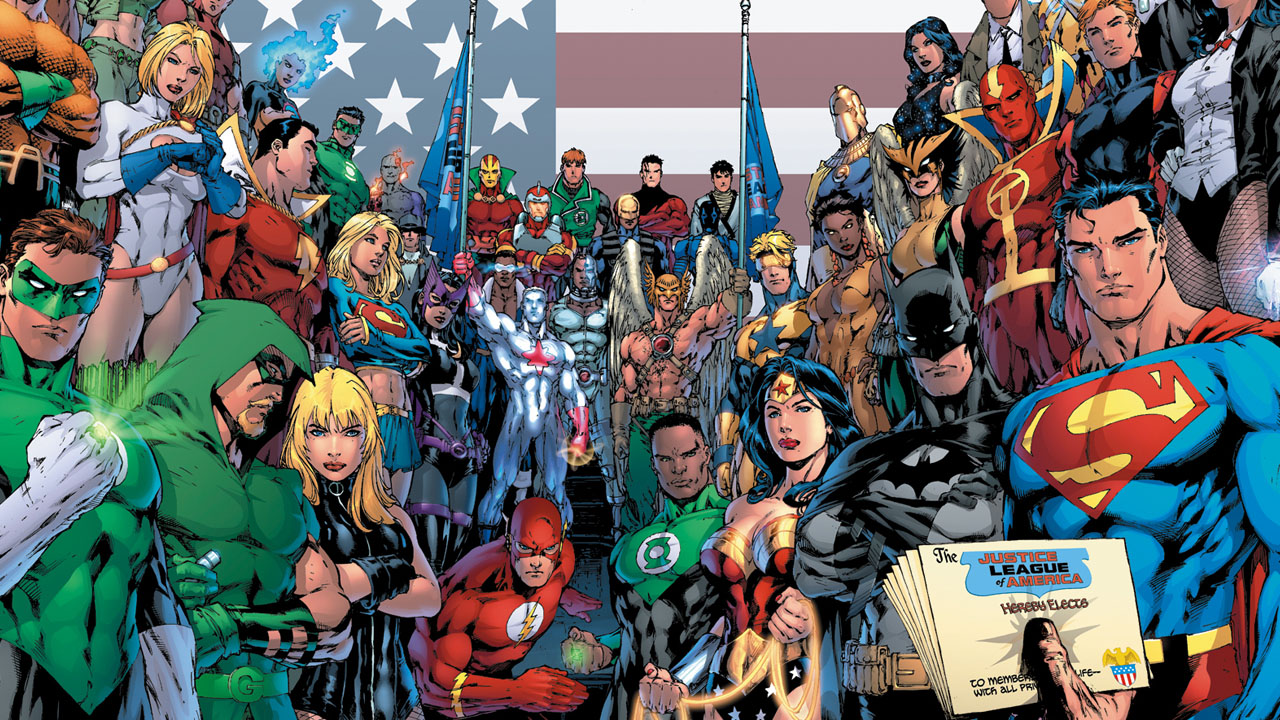
Exhibit B: The Justice Society of America
Next up is the Justice Society of America. This is the pre-New 52 version of the JSA, featuring a mixture of golden age heroes and modern legacy heroes, as painted by Alex Ross. The image features 33 heroes. Of them, Superman is a duplicate from the JLA (yes, it’s a Superman from an alternate earth, but I’m still considering it to be the same character). Omitting him brings it down to 32 heroes.
Of those characters, eleven of them — from left to right, Captain Marvel, Dr. Mid-Nite, Mr. America, Obsidian, Hourman (Android), Green Lantern (Alan Scott), Dr. Fate (Hector Hall), Hourman (Rex Tyler), Hourman (Rick Tyler), Power Girl, and Amazing Man — wear capes, while the other 21 heroes do not.
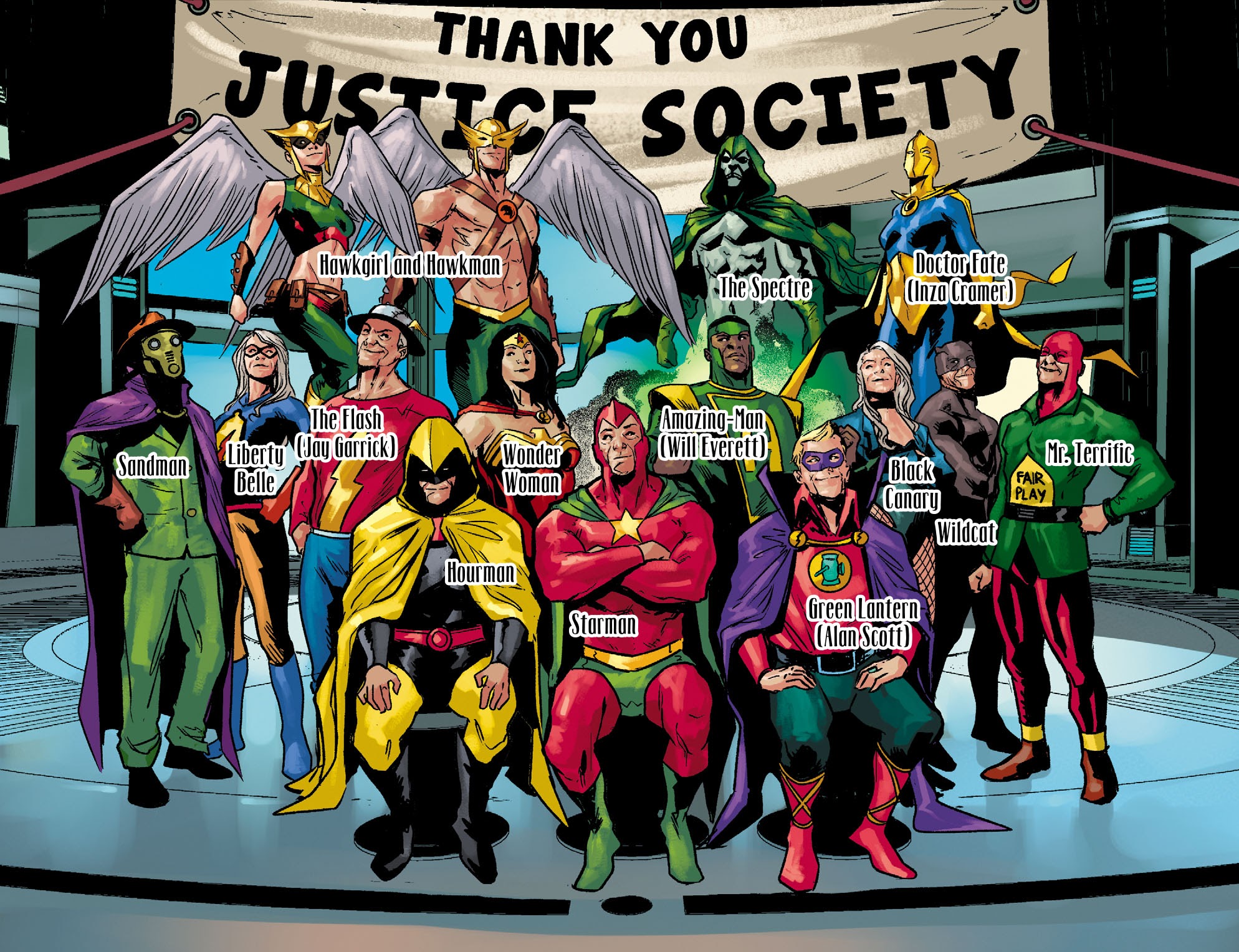
Exhibit C: The Teen Titans
Alright, let’s get nuts. Here we have the Teen Titans, pre-New 52, as drawn by Phil Jimenez. If I’m not mistaken this is actually a collection of everyone who was still alive at the time and who had ever been a Teen Titan. There are some duplicates on here — four of the original five Titans are represented both as their past selves and current selves (RIP Garth), and The Atom is on there (yes, he was a Teen Titan, look it up). There are 52 total unique characters here; fifteen of them are wearing capes. Of them, fourteen are definite cape-wearers.
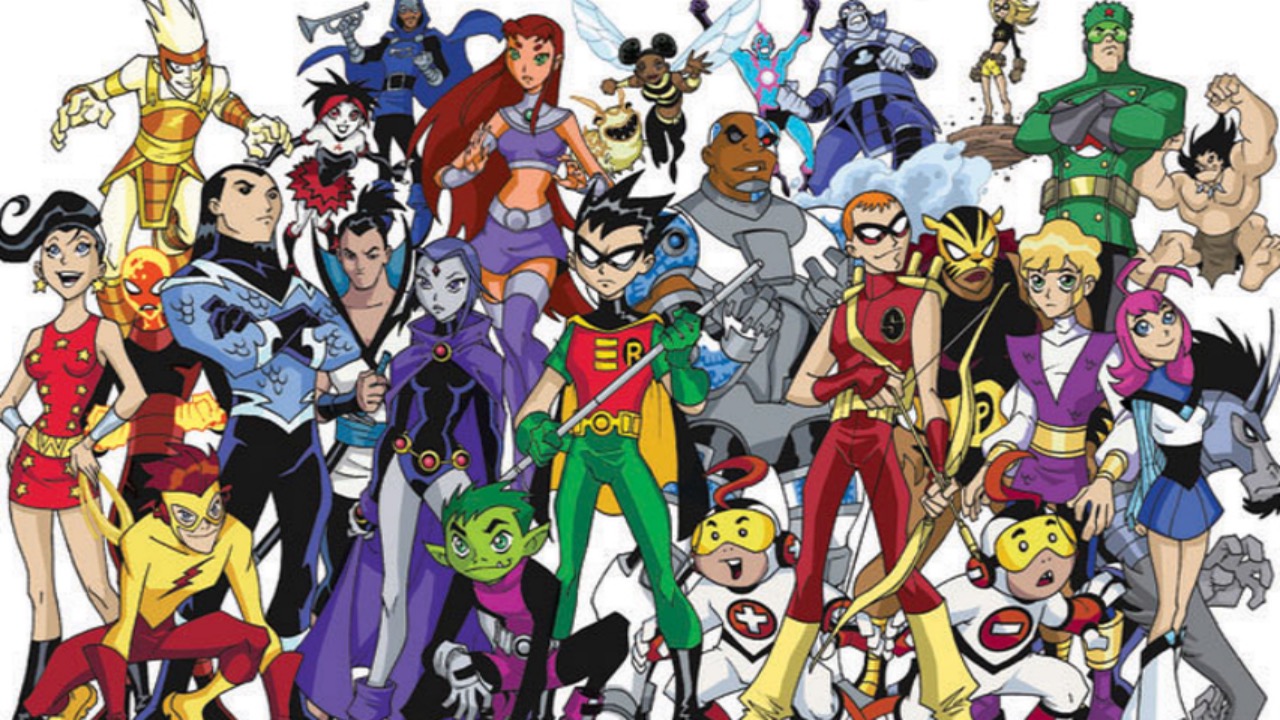
The one who’s on the fence is Dick Grayson, who appears on this cover as both Robin and Batman. This one’s going to be tight: Dick Grayson was Robin (caped) for 43 years before adopting the identity of Nightwing (no cape) in 1983. He was Batman (caped) briefly in 1994, and then took over the identity again from 2009 until 2011. Since then he’s alternated between Nightwing and Agent 37 (no cape). Grand total, Dick wore a cape for 46 years, and has worn no cape for 34 years. I’m calling it: Dick Grayson is a caped hero.
Exhibit D: The Fantastic Four
Marvel’s first family, rendered here by Mike Wieringo, Karl Kesel, and Richard Isanove. Four characters. No capes. They’ve never worn capes. Can you imagine if they did? Would their capes be made of unstable molecules too? Would Mister Fantastic’s cape stretch with him? Would the Human Torch burn through capes and constantly have to replace them? How would a shirtless The Thing attach his cape? So many questions!
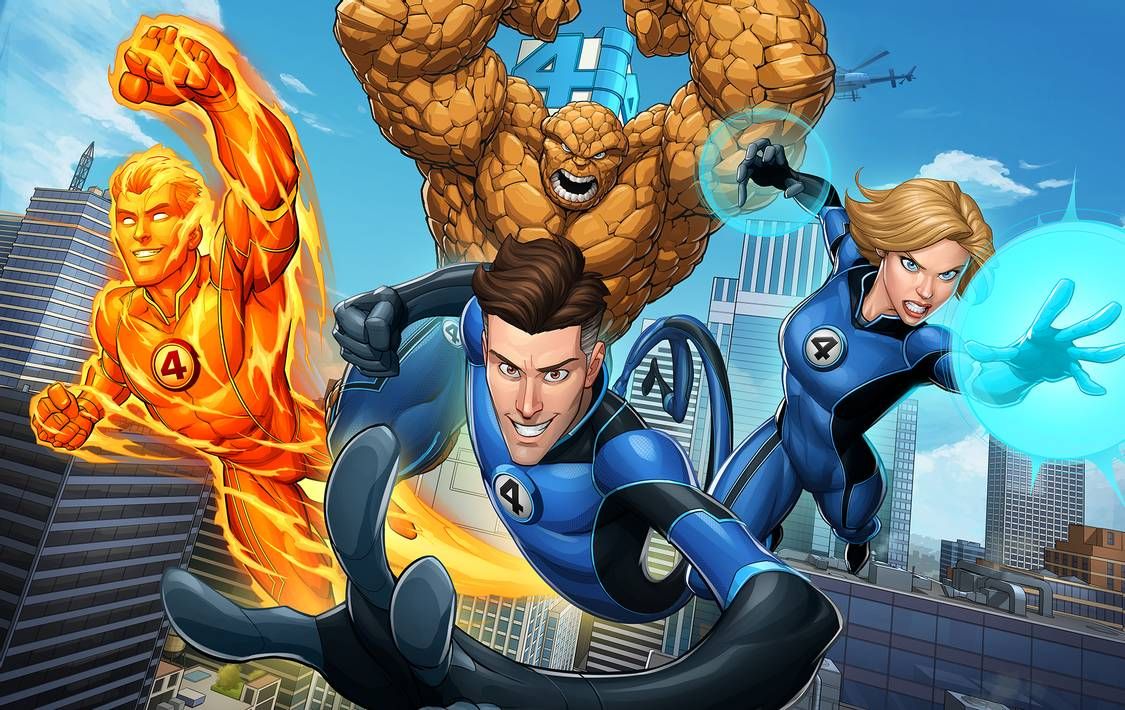
Anyway. This one’s pretty easy.
Exhibit E: The Avengers
From four to…a lot more than four. Basically every non-mutant hero in the Marvel universe has been an Avenger. The cover above, by the inimitable George Pérez, is from 1998’s Avengers #1, and features everyone who had been a part of the team up until that point. There are forty heroes total on this cover. Of them, I count eight who are definitely wearing capes, and who have definitely worn capes for a majority of their history.
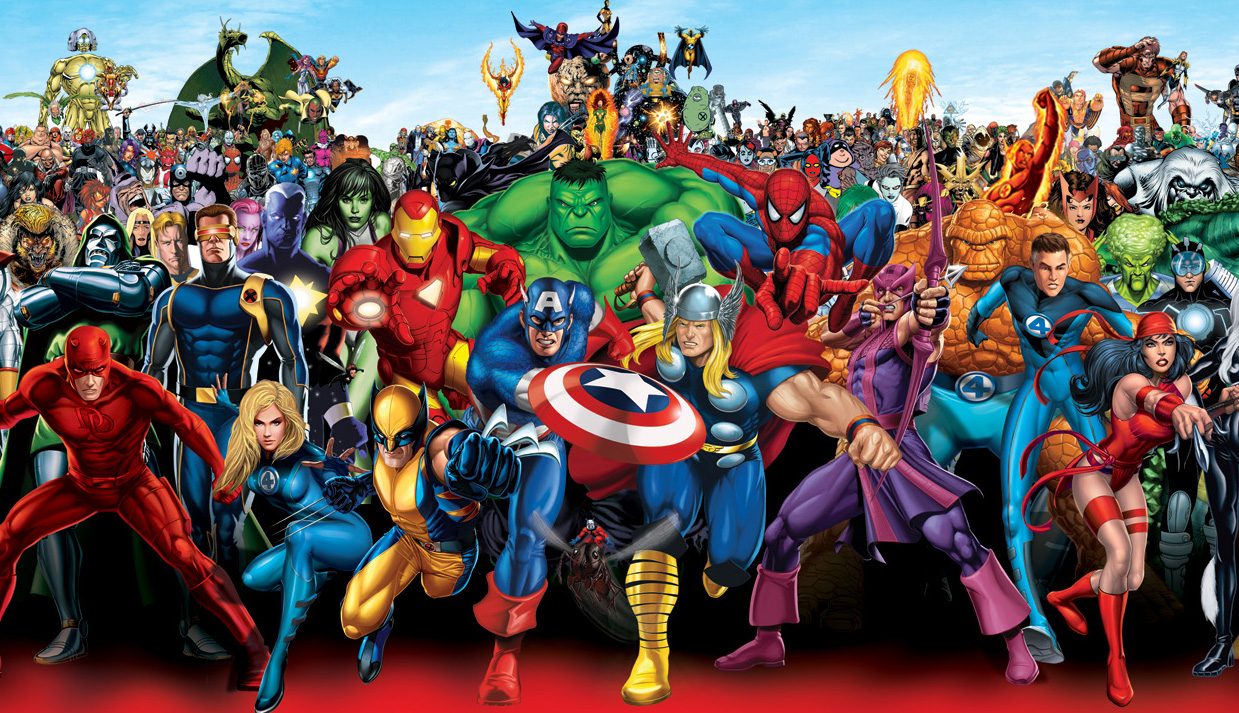
Another character, The Black Knight, does not appear to be wearing a cape on this cover, but has definitely worn one elsewhere as part of his knightly attire for the majority of his existence (yes, there was a period in the ‘90s where he wore a jacket, but who didn’t wear a jacket then). So that brings us to nine caped heroes.
Exhibit F: The X-Men
And here we have our final group of heroes, Marvel’s merry mutants. This image of the X-Men by Carlos Pacheco was originally published as a spread in the X-Men: The Ultimate Guide coffee table book. It features a late ‘90s iteration of the team with such fan-favorite characters as Maggot (no cape) and Marrow (no cape).
This image features 33 characters. One of them, Beast, was also included in the Avengers art, so I won’t include him. Another is Sabretooth. I think we can all agree that Sabretooth is decidedly not a hero. So he’s out.
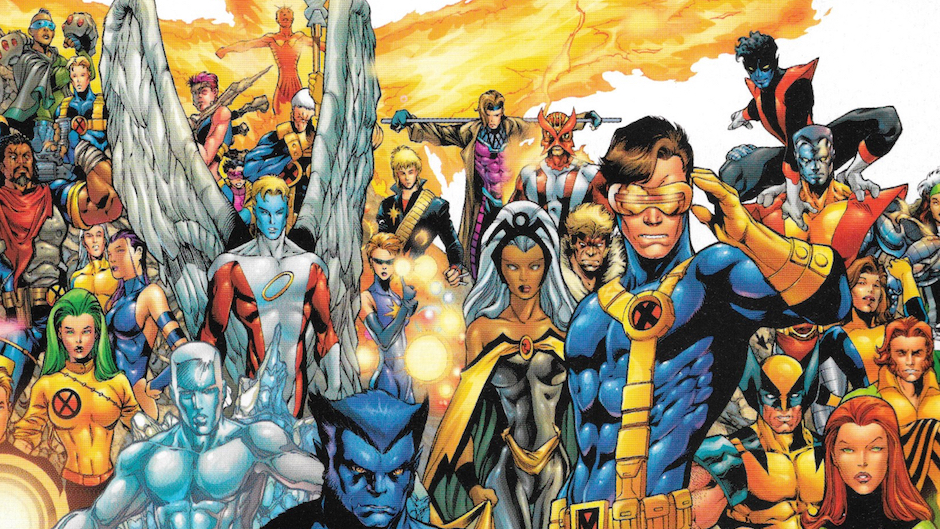
Of the 31 remaining heroes, only two of them are definitively wearing capes: Kwannon and Storm. A third, Polaris, is pictured in her capeless uniform, but has definitely worn a cape for most of her history in other costumes, so that brings the number of caped heroes to three.
There’s one more character in cape contention: Banshee. I looked at many, many images of Banshee to see how the fabric under his arms connects to his costume. If it connects on the back, even if it’s not exactly around the neck, I’ll call it a cape; if it doesn’t, it’s not a cape. Finally I found this turnaround of Banshee’s ‘90s, Jim Lee-designed uniform:
The fabric connects from his underarms down to the sides of his torso/legs. Alas, that’s no cape.
Damn Those Look Good: The Top Superheroes That Wear Capes
Superheroes have worn capes for as long as there have been superheroes. The accessory is as important to the heroes that wear them as a good pair of shoes on a mountain hike. While some are worn to complete the superhero look, others are worn because they add more abilities to an already impressive set of abilities.
No matter the reason for wearing them, one thing is for certain…they look damn good in them.
Not all capes are created equally, however. Some capes are there just because the creator couldn’t think of something better to draw. Some capes are there because it’s commonplace for superheroes to wear them. And some capes are there for no good reason whatsoever.
Luckily, I’m not interested in those capes. I’m interested in only the best capes and if you’ll permit me a few minutes, I’d like to count them down for you.
Here are The Top 10 Superheroes That Wear Capes.
Thor
Thor has been a mainstay in Marvel Comics for almost as long as Marvel Comics has existed. He first appeared in Journey Into Mystery #83 back in August of 1962. He was created by Stan Lee, Larry Lieber, and Jack Kirby.
As the God a Thunder, Thor is capable of things that most other characters aren’t. He possesses superhuman strength, durability, stamina, speed, and is near-immortal. Thor is also able to manipulate the weather, dimensionally travel, and fly. Because he is the God of Thunder, when Thor appears or disappears, he’s often surrounded by a lightning bolt, blast, and a cloud of dust.
-
Product on sale
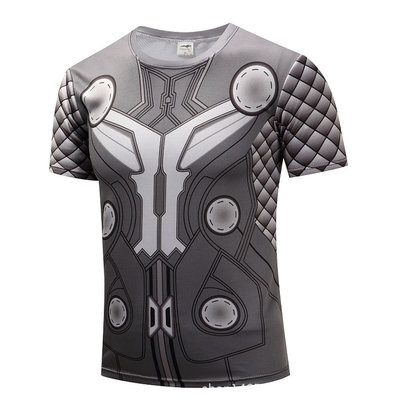 Avengers Endgame Thor T ShirtOriginal price was: $30.00.$23.00Current price is: $23.00.
Avengers Endgame Thor T ShirtOriginal price was: $30.00.$23.00Current price is: $23.00. -
Product on sale
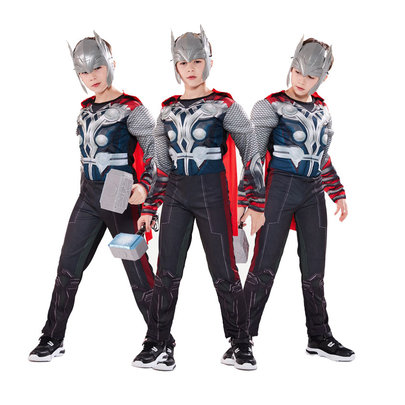 Infinity War Thor Costumes For KidsOriginal price was: $39.00.$28.00Current price is: $28.00.
Infinity War Thor Costumes For KidsOriginal price was: $39.00.$28.00Current price is: $28.00. -
Product on sale
 Thor Cape And Mask Sets For Children’sOriginal price was: $20.00.$16.00Current price is: $16.00.
Thor Cape And Mask Sets For Children’sOriginal price was: $20.00.$16.00Current price is: $16.00.
Thor has gone through a multitude of costume changes over the years. Each version of his costume, while not too different from the last, has one distinct commonality…they all utilize a bright red cape.
Superman
Arguably, there are two capes in the DC Universe more famous than any others, and both make this list.
The first is Superman’s.
Superman’s cape is more than just a cape. It’s a symbol of hope, a light in the dark, and a reminder that there is good in the world. Superman’s cape has remained practically unchanged since its creation. It’s a brilliant red with the iconic crest for the House of El on it. The cape is as iconic as the suit and for some, myself included, it’s more iconic.
And why?
-
Product on sale
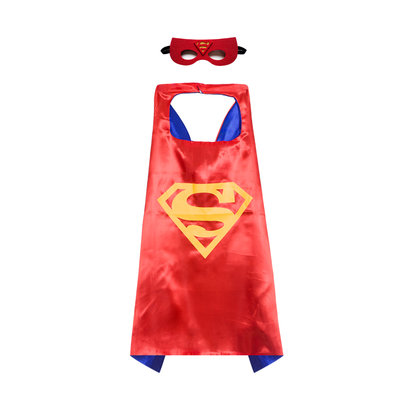 Superman Cape And Mask Kids Halloween CostumesOriginal price was: $20.00.$15.00Current price is: $15.00.
Superman Cape And Mask Kids Halloween CostumesOriginal price was: $20.00.$15.00Current price is: $15.00.
Simple. The cape rising upwards in the wind is one of the most famous representations of Superman in history. It’s been on more comic covers, appeared in more forms of media, and inspired more children taking selfies than any other cape ever created.
Batman
Batman’s cape is the other of DC’s most famous capes.
-
Product on sale
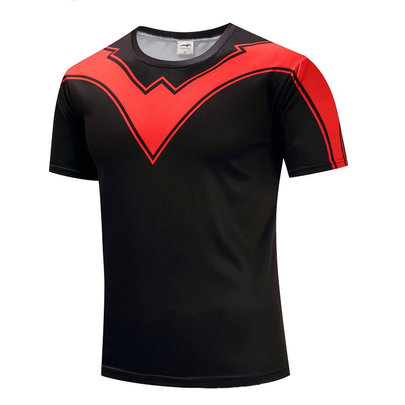 Batman Beyond NightWing T-shirtOriginal price was: $30.00.$20.00Current price is: $20.00.
Batman Beyond NightWing T-shirtOriginal price was: $30.00.$20.00Current price is: $20.00. -
Product on sale
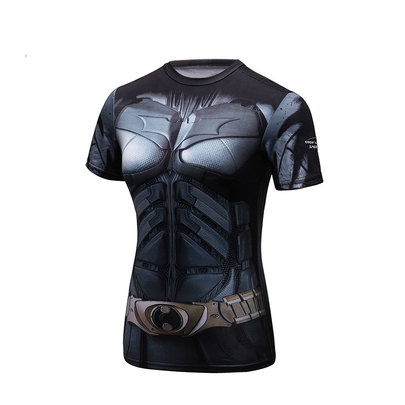 Batman Dark Knight Shirt For GirlsOriginal price was: $30.00.$23.00Current price is: $23.00.
Batman Dark Knight Shirt For GirlsOriginal price was: $30.00.$23.00Current price is: $23.00. -
 Superhero Batman Capes And Mask Set For Children$20.00
Superhero Batman Capes And Mask Set For Children$20.00
Batman’s cape is everything that a good cape should be. Instead of being a beacon of hope for all who look at it, Batman’s cape is used to strike fear in his opponents. His cape is what makes his suit. It clouds him when he’s visible, it carries him when he’s airborne, and it sends a paralyzing fear down the spines of any who see it.
Batman’s cape is the reason he’s instantly recognizable and is the reason that creators have been able to recreate him time and again. Batman’s cape is as important to the character as the Batmobile. Like the Batmobile, the cape gives the character depth, definition, and separates him from 1000’s of other superheroes. Batman without his cape is like a pizza without cheese…just plain strange.
Spawn
Unlike many of the other superheroes that wear capes, Spawn’s cape is actually a living entity. The cape and the rest of the costume forms a symbiotic relationship with Spawn. It’s actually a living organism that’s entangled itself around Spawn’s nervous system. It survives by feeding off his necroplasmic body.
-
Product on sale
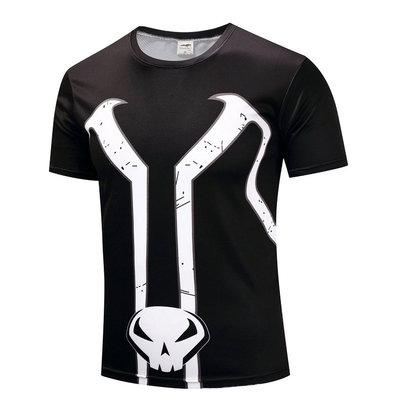 Spawn T ShirtOriginal price was: $30.00.$23.00Current price is: $23.00.
Spawn T ShirtOriginal price was: $30.00.$23.00Current price is: $23.00.
His suit and cape aren’t just generically known as Spawn’s suit and cape.
Storm
Storm has one of the more unique capes in comics. Different from most, Storm’s cape attaches at her upper back and her wrists. This configuration gives her one of the best looks in comic books. When Storm opens up her arms, she looks like a butterfly flying up to the heavens. For a mutant who can control the weather and ride the skies, this couldn’t be more perfect.
Storm is an Omega-Level mutant, who has, for a time led the X-Men, ruled a nation, was the first would-be member of the X-Men that Professor Xavier met, rocked an iconic haircut, and beat Wonder Woman in battle. She is one of the most recognizable superheroes in existence and has done more for the genre than most comic book characters have ever dreamed of doing. Even though she has gone through multiple costume changes, Storm almost always chooses to wear her iconic cape.
Nope.
The suit and cape are actually known as Leetha of the 7th House of K. Through them, he’s granted incredible power. They allow him to create spikes, armor, chains, and to shrink and grow his size. In addition, they give Spawn a constant supply of power and subconsciously defend him. Spawn’s cape is like having a best friend who claims they’ll watch out for you…but instead of only claiming that they will, it actually does.
And that’s it. The Top 10 Superheroes That Wear Capes. Agree? Disagree? Who would make your superheroes that wear capes list?


